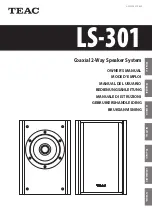
2
Garmin Radome Installation Instructions
Installation
Radome Installation
The following section covers the installation and setup of the Garmin radome. The Garmin radome only operates with Garmin chartplotters
through a Garmin marine network. See your Garmin dealer or the Garmin Web site for more details.
To complete the installation, you need the appropriate fasteners, tools, and mounts. These items should be available at most marine dealers.
Always wear safety goggles, ear protection, and a dust mask when drilling, cutting, or sanding. When drilling or cutting, always check first
to see what is on the other side of the surface. If you experience difficulty with the installation, contact Garmin Product Support or seek the
assistance of a professional installer.
Installation Guidelines
To maximize the performance of the radar, observe the following installation guidelines:
• An ideal radome mounting location is high above the ship’s keel line with a minimal part of the vessel’s structure or rigging blocking
the radar beam. Obstructions in the path of the radar beam may cause blind and shadow sectors, or generate false echoes. The higher the
installation position, the further the radome can detect targets.
• Avoid mounting the radome on the same level as smoke stacks, horizontal spreaders, or crosstrees on a mast. Do not install the radome near
heat sources where it may be subjected to smoke or hot air from smoke stacks or heat from lights.
• The mounting surface or platform should be sturdy enough to support the weight of the radome (GMR 18/18 HD = 7.17 kg/15.8 lbs, GMR
24/24 HD = 9.12 kg /20.1 lbs), as flat as possible, and parallel with the vessel’s water line.
• It is recommended that the radar radome be mounted out of range of personnel (horizontal beam width above head height). When the radome
is transmitting, do not look directly at the antenna at close range; eyes are the most sensitive part of the body to electromagnetic energy.
When properly installed and operated, the use of this radar conforms to the requirements of ANSI/IEEE C95.1-1992 Standard for Safety
Levels with Respect to Human Exposure to Radio Frequency Electromagnetic Fields.
• A “Compass Safe Distance” must be maintained between a compass and the radome. The Compass Safe Distance is measured from the
center point of the compass to the nearest point on the radome.
• Standard compass = 1 m (39
3
/
8
")
• Standby Steering and Emergency compasses = 0.5 m (19
3
/
4
" )
• Mount other electronics and cables more than 2 m (78
3
/
4
") from the path of a radar beam. A radar beam can normally be assumed to spread
25° vertically above and below the radome’s radiating element. For vessels with higher bow angles at cruise speed, it may be helpful to
lower the angle so the beam points slightly downward to the waterline while at rest. Shims may be used as necessary.
• Install the radome away from antennas or other electronics. GPS antennas should be either above or below the radar beam path of the
radome. Mount at least 1 m (39
3
/
8
") from any equipment transmitting or cables carrying radio signals, such as VHF radios, cables, and
antennas. In the case of Single Side Band SSB radios, the distance should be increased to 2 m (78
3
/
4
" ). IEC 60936-1, clause 3-27.1, states
maximum distances from the antenna at which RF (radio frequency) levels can be expected.
(100W/m squared = 121.92 cm [48"]) (10W/m squared = 274.32 cm [108"])
• The radar radome transmits electromagnetic energy. It is important that the radar is turned off or the DC power input is disconnected when
personnel are required to come close to the radome to perform work on the radome assembly or associated equipment.
12.5°
12.5°
12.5°
12.5°





























